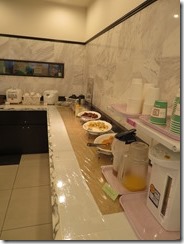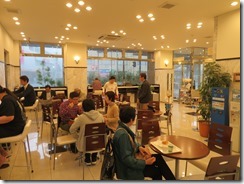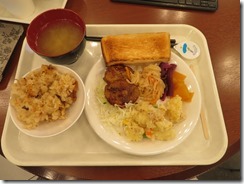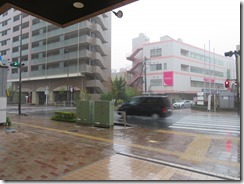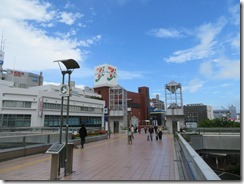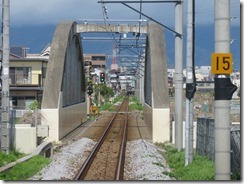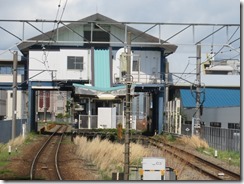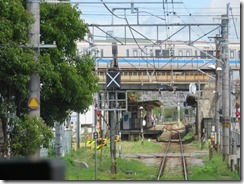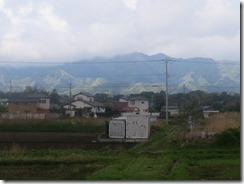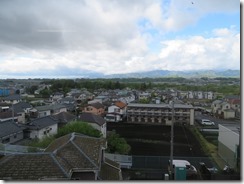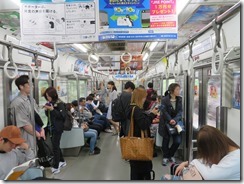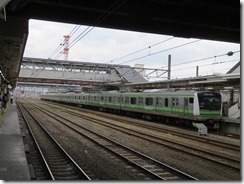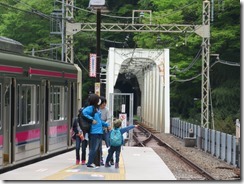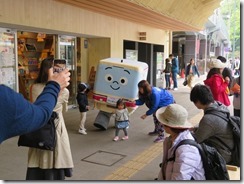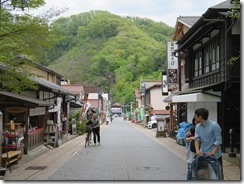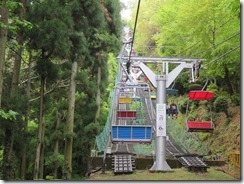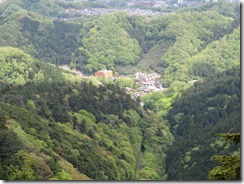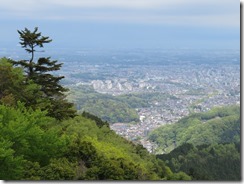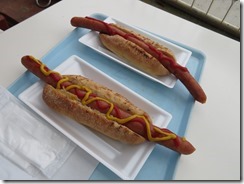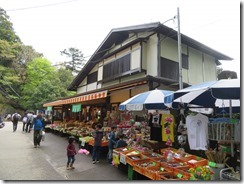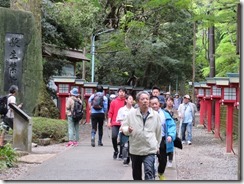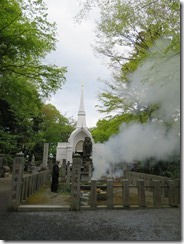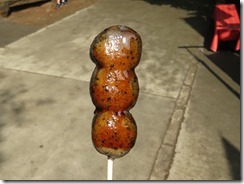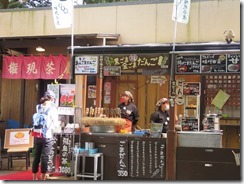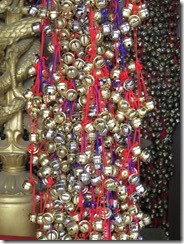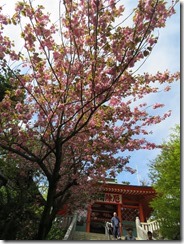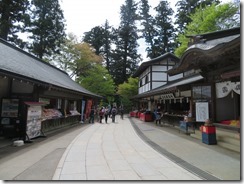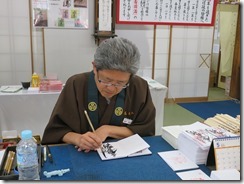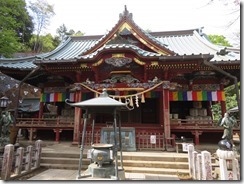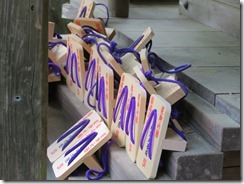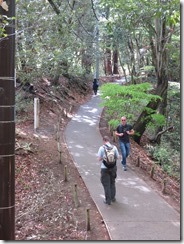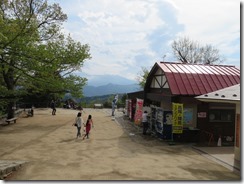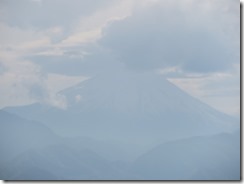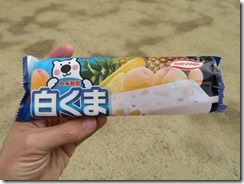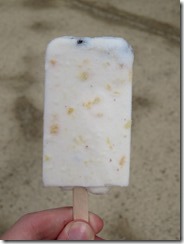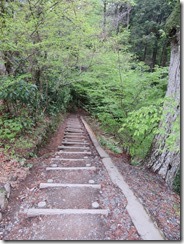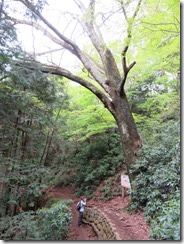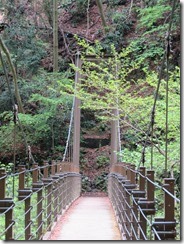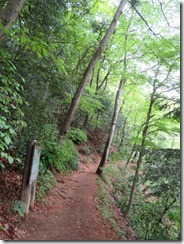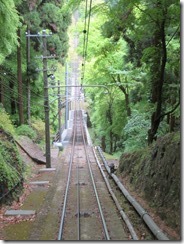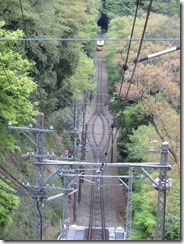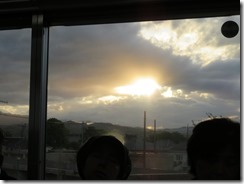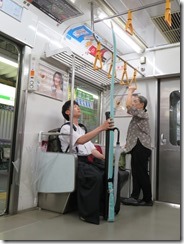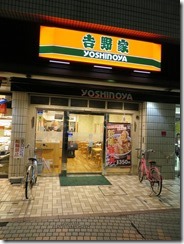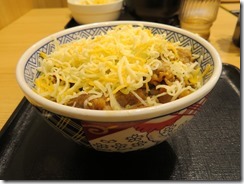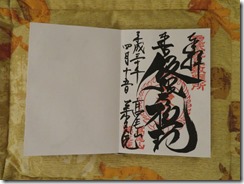Chigasaki, where we’re staying now, is a city in Kanagawa Prefecture. For a long time, only pasture and farmland has existed here – the old Edo-period Tokaido Road, joining Kyoto with Tokyo, passed through here, but the area lacked a post town. It wasn’t until the Tokaido train line was built in the Meiji period – including a station at Chigasaki – that development in the area really started. Today it has a population of 240,000, and largely serves as a bedroom community for Tokyo and Yokohama. It’s also a popular swimming destination, and is known as the birthplace of surfing in Japan, and is a centre of Hawaiian culture in Japan – to that end, it’s had a sister-city relationship with Honolulu since 2004. In all honesty, though, my choice of this hotel when placing bookings was largely one of necessity – pretty much every other hotel in Tokyo and Kanagawa was already booked out.
So, today’s plan was to climb another mountain – this time Mount Takao near Hachioji. Last night’s weather projections for today weren’t looking too promising though – rain was predicted overnight with 100% chance, but since the probability of rain plummeted after 10am, I made the call last night that we’d go for it after all.
Turned out that was the right call after all – although it was absolutely bucketing down over breakfast, it stopped raining shortly before we were ready to go, and didn’t start again the rest of the day. I still carted my umbrella around all day, though.
Getting to Hachioji from Chigasaki involved catching four separate trains. Our first train was the Sagami Line, which starts at Chigasaki Station, which is one of my chief reasons for selecting Chigasaki specifically from the handful of hotels with availability. The Sagami Line almost feels like a rural line – single-tracked the whole way (with passing loops about every second station) through scattered houses and small farm plots. For some reason, I just the feel of those little single-track stations. So quaint. Also, as per what seems to be usual for rural train lines, it has manually-operated door open/close buttons.
The Sagami Line got us most of the way there, then we had to change at Hashimoto to the Yokohama Line for the last few stops to Hachioji, then change to the Chuo Line for two stops to Takao, then change to the private Keio line for the one stop to Takaosanguchi. It was, I confess, a tiny bit annoying to get most of the way on one train, but then have to make three transfers for the last little bit. The JR and Keio Takao stations actually share an exit, and so had three rows of ticket gates arranged in a Y shape – one row for entering/exiting the JR station, one for doing the same for the Keio station, and one row to pass directly from the JR station to the Keio station. Since our JR passes cover our JR travel, and we pay for private-line travel with our Suica cards, we unfortunately had to exit through the JR gates and re-enter through the Keio gates rather than make the direct transfer.
In any case, we eventually made it to Mount Takao. Standing 599 metres tall, and located barely an hour from central Tokyo, it’s a popular hiking area, seeing about 2.5 million visitors annually. It’s also the home of Yakuo-in, a temple which was supposedly founded in the year 744, making it only a little bit newer than Nihon-ji from yesterday. The mountain is also regarded as a home for Tengu, shinto gods or supernatural beings who take the form of men with looooong noses.
Four paths lead to the top (though two of them have fair sections of overlaps with other path). Route 1 is the main path, paved the whole way and visiting all of the important sites up the mountain. As an added bonus, Route 1 also has the option of skipping the most strenuous lower section by taking either a funicular or a chair lift about a third of the way up.
We elected to take the chair lift – slower than the funicular, but much less crowded, and more open to the fresh air and the sounds of nature. Downside: no safety bar, and nothing but our grip preventing stuff from falling. And once or twice we had to hold our feet up so they wouldn’t drag on the ground. I did like the boarding procedure, though – instead of just standing there waiting for the chair to whack you in the back of the knees, there’s a moving footpath, so you’re moving at the same speed as the chair.
Once at the top of the chairlift, we decided it was time to stop for lunch. We ate at a place with quite a nice view selling “Tengu dogs” – basically hot dogs where the sausages were about twice the length of the bun, representing the long nose of a Tengu. Yeah, not really traditional Japanese fare, but it was there, and we weren’t sure what else would be available (though it turned out there were shops and eateries pretty much the whole way along). Pretty tasty all the same.
After lunch, we headed on up the road. It was quite a lovely road, shaded by cedars on both sides. Passing though the Joshin-mon gate, we encountered a small procession of monks coming the other way. Later, we climbed up the “Men’s Slope”, a staircase with 108 steps, with each step correlating to one of the 108 earthly desires (contrasted with the “Women’s Slope”, which runs parallel, and is just a hill). At the top, there’s the Busshari Stupa, a Thai-styled building representing Japanese-Thailand relationships and containing Buddhist relics. There was a monk in front burning green branches to produce large amounts of smoke for some purpose I was not entirely aware.
Nearby, we decided to stop for another snack – black sesame dango (= dumplings). James had his with red-bean paste, but I just had regular soy-based sauce.
Moving on from there, we reached Yakuo-in proper. It enshrines Fudo Myo-o, the Unmoving King. We admired all of the temple buildings while climbing the stairs past them. I was intrigued by mini-shrine to pray for relationships that was full of large numbers of little bells.
After a whole lot more hiking, we eventually reached the summit, and there was a spectacular view from there. If the air was clearer, we may have been able to see Chigasaki where we’d come from. To my complete surprise, though, one thing we did manage to see was Mount Fuji. Albeit only just – sadly there was too much cloud cover over the mountain to get a good photo of it. Apparently Mount Takao is a popular place to view Diamond Fuji – on a few days each winter, the sun rises directly behind Fuji when viewed from Takao, making it appear like a diamond setting on a ring, or something. That’s Fuji in the last photo.
In any case, we stopped for a breather at the top, and bought some fruit salad ice creams for a snack, then it was time to start heading down.
For a change, we decided to take Route 4 for the descent. An unpaved path which was (in most places) little more than a flat space cut into a steeply sloping mountainside, it was very green and extremely serene. We only saw a few other people the whole way. It also includes the only suspension bridge on Mount Takao.
Route 4 rejoins Route 1 just above the funicular and chairlift stations, so we decided to take the funicular back to the bottom. It’s actually Japan’s steepest funicular, with a maximum slope of 31.8° near the top – which, I confess, was a little bit scary tipping over onto when we were starting the descent.
Back at the bottom, we headed back to the train station, and managed to get a fairly rapid series of transfers to arrive back at Chigasaki Station (save for one moment at Takao Station when the train stopped on a different platform to what I was expecting, meaning we had to scramble a bit). One thing I was quite entertained by was a row of restaurants along platform 1 at Hashimoto Station – they have doors facing both the platform and the street, and so to prevent people from passing through the restaurants to avoid the ticket gates, each shop has a counter running down the middle separating it into two separate sections.
It’s kinda fun people-watching on the way – at one point, a school student boarded with a traditional archery bow, so long that it scraped the ceiling with propped upright, and wearing traditional archer’s uniform.
Back at Chigasaki, we decided to have dinner at Yoshinoya over on the other side of the station. I’d already eaten at Yoshinoya on my last visit and enjoyed it a lot, so I was torn between whether I wanted to enjoy it again, or whether I wanted to try somewhere new. We ate there in the end – as mentioned previously, it’s a chain of restaurants serving in gyuudon, thin-sliced beef on rice. I had beef cooked Korean galbi style with cheese, while James had a regular gyuudon set, with salad, miso, and grated yam.
Dinner done, we headed back to the hotel. This will be our last night in Chigasaki – we’re off to a new city tomorrow.
Today’s photo count: Five hundred and seventy-six
Today’s step count: 13,731 steps, for 10.3km.
Today’s goshuin count: Just the one, Yakuo-in.
Today’s stamp count: I managed to score one from the JR Takao Station, but our other transfers were so fast I didn’t get the chance to go looking for the stamps. Keio also had mini-stamps all up and down Mount Takao – I got four, which I put all on the same page, but I passed two others without noticing them, even though I had a map showing where they’d be.

